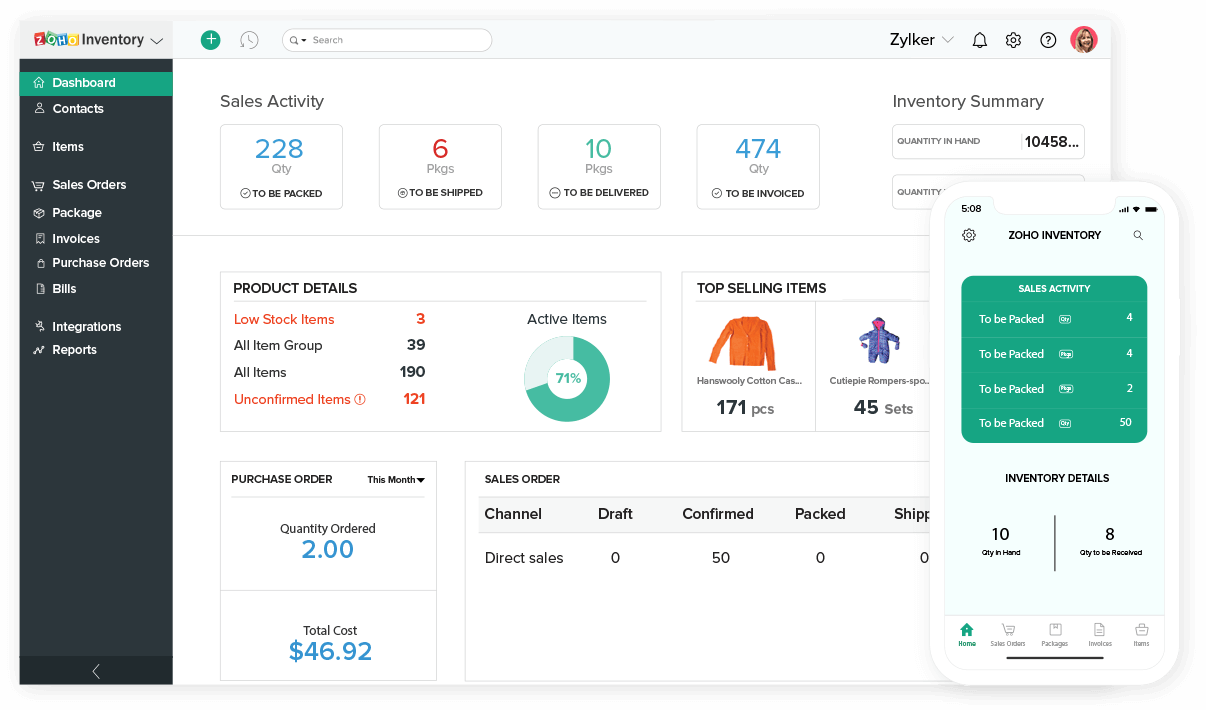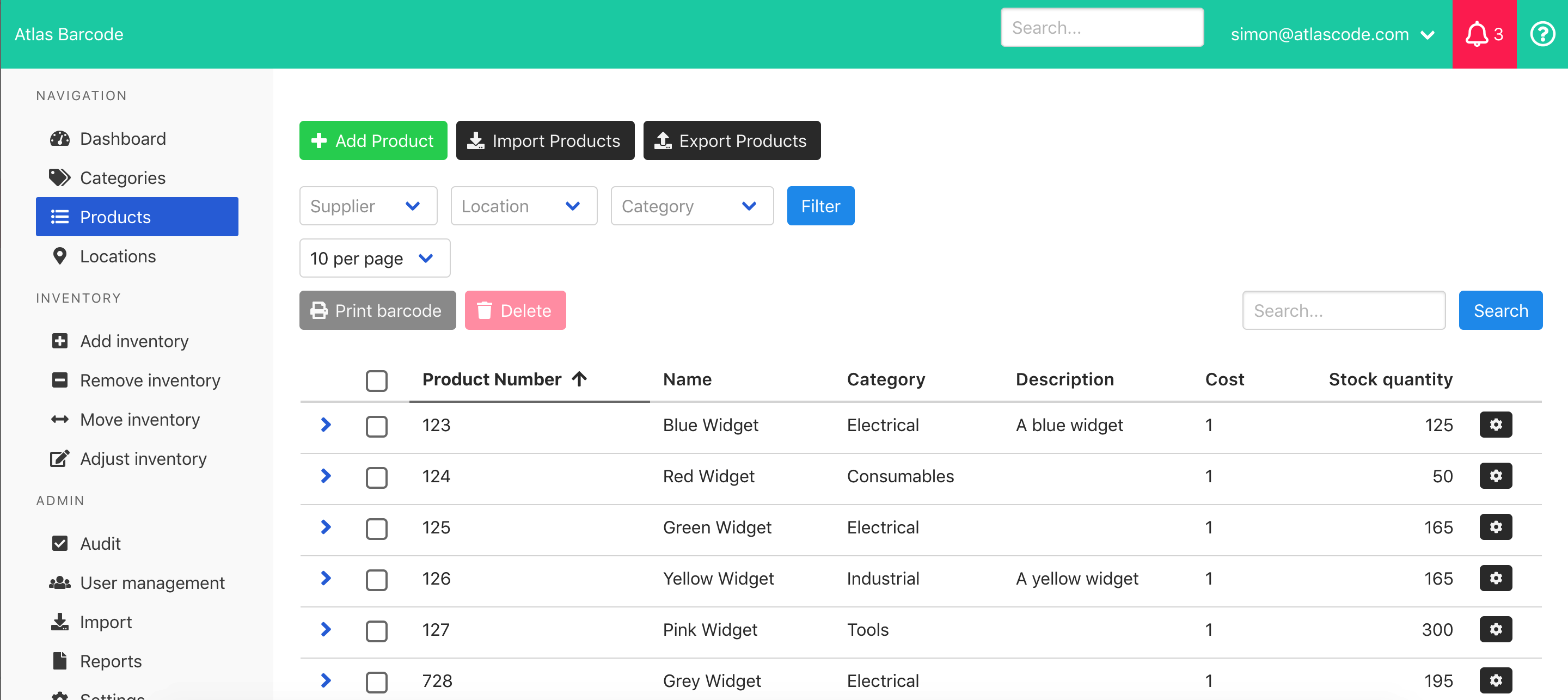Small business accounting software with inventory management empowers businesses to streamline their financial and inventory processes, unlocking a world of efficiency and accuracy. This innovative software offers a comprehensive suite of features designed to simplify complex tasks, enhance decision-making, and drive profitability.
From managing invoices and expenses to tracking inventory levels and generating reports, small business accounting software with inventory management transforms the way businesses operate. Dive into the depths of this topic and discover how this powerful tool can revolutionize your financial management.
Overview of Small Business Accounting Software with Inventory Management
Small business accounting software with inventory management is a powerful tool that can help businesses streamline their financial operations and gain valuable insights into their inventory levels. This type of software is designed to automate many of the tasks associated with accounting and inventory management, such as tracking expenses, generating invoices, and managing stock levels. By using accounting software with inventory management, small businesses can save time, reduce errors, and improve their overall financial performance.
Key Features and Functionalities
Small business accounting software with inventory management typically includes a wide range of features and functionalities, including:
- Expense tracking: Track business expenses, including mileage, travel, and entertainment.
- Invoicing: Create and send professional invoices to customers.
- Inventory management: Track inventory levels, set reorder points, and generate purchase orders.
- Financial reporting: Generate financial reports, such as profit and loss statements and balance sheets.
- Customer relationship management (CRM): Manage customer relationships, including contact information, purchase history, and communication.
Types of Small Business Accounting Software with Inventory Management
Small business accounting software with inventory management can be categorized into different types based on their features, pricing, and target audience. Understanding these types can help businesses choose the most suitable software for their specific needs.
Cloud-based Software
- Hosted on remote servers, accessible from anywhere with an internet connection.
- Typically offered as a subscription-based service, with monthly or annual fees.
- Advantages: automatic updates, scalability, and accessibility.
- Examples: QuickBooks Online, Xero, FreshBooks
On-Premise Software
- Installed locally on the business’s own computer or server.
- Typically purchased as a one-time license fee, with additional costs for updates and support.
- Advantages: more control over data security, customization options.
- Examples: QuickBooks Desktop, Sage 50cloud, NetSuite
Industry-Specific Software
- Tailored to the specific needs of particular industries, such as retail, manufacturing, or healthcare.
- Offers specialized features and functionalities relevant to the industry.
- Examples: Fishbowl Inventory for retail, QuickBooks Enterprise for manufacturing, Medisoft for healthcare
Open-Source Software
- Freely available software with source code that can be modified and distributed.
- Typically requires technical expertise to implement and maintain.
- Advantages: cost-effective, customizable, community support.
- Examples: Odoo, Akaunting, Apache OFBiz
Features to Consider When Choosing Small Business Accounting Software with Inventory Management

Selecting the right small business accounting software with inventory management is crucial for efficient operations and accurate financial reporting. Here are key features to consider when making your choice:
To simplify the decision-making process, we’ve compiled a table outlining these features and their descriptions:
Key Features and Descriptions
| Feature | Description |
|---|---|
| Inventory Tracking | Real-time tracking of inventory levels, including stock on hand, allocated stock, and backorders. |
| Multiple Warehouse Management | Ability to manage inventory across multiple warehouses or locations. |
| Purchase Order Management | Simplified creation, tracking, and approval of purchase orders. |
| Barcode Scanning | Support for barcode scanning for efficient inventory tracking and data entry. |
| Serialized Inventory Tracking | Tracking of individual items with unique serial numbers for enhanced control. |
| Costing Methods | Support for various costing methods, such as FIFO, LIFO, and weighted average cost. |
| Reporting and Analytics | Robust reporting and analytics capabilities for inventory performance analysis. |
| Integrations | Seamless integration with other business systems, such as e-commerce platforms and CRM systems. |
Benefits of Using Small Business Accounting Software with Inventory Management

Integrating small business accounting software with inventory management offers a plethora of advantages that can streamline operations and enhance financial performance.
Let’s delve into the key benefits of utilizing such software:
Improved Accuracy and Efficiency
- Automates inventory tracking and record-keeping, eliminating manual errors and discrepancies.
- Provides real-time visibility into inventory levels, enabling informed decision-making and preventing stockouts or overstocking.
- Streamlines inventory counting and reconciliation processes, saving time and reducing the risk of errors.
Enhanced Inventory Control
- Optimizes inventory levels based on historical data and demand forecasting, minimizing carrying costs and improving cash flow.
- Tracks inventory movements, providing insights into stock velocity and identifying slow-moving or obsolete items.
- Enforces inventory control measures, such as minimum stock levels and reorder points, to prevent stockouts and ensure timely replenishment.
Increased Profitability
- Reduces inventory shrinkage and theft by providing accurate and up-to-date inventory records.
- Optimizes inventory levels, freeing up capital for other business activities and increasing profitability.
- Improves customer satisfaction by ensuring product availability and reducing the risk of lost sales due to stockouts.
Implementation and Best Practices for Small Business Accounting Software with Inventory Management
Implementing small business accounting software with inventory management can streamline your business operations and provide valuable insights into your inventory levels. Here’s a step-by-step guide to help you get started:
Step 1: Choose the Right Software
Consider your business needs, the number of inventory items, and your budget when selecting software.
Step 2: Gather Your Data
Compile all relevant financial and inventory data before implementing the software to ensure a smooth transition.
Step 3: Set Up the Software
Follow the software’s instructions to install and configure it. This may include setting up accounts, importing data, and customizing reports.
Step 4: Train Your Team
Provide training to ensure your team understands how to use the software effectively and efficiently.
Step 5: Go Live
Start using the software for all your accounting and inventory management tasks. Monitor the system closely to identify any issues.
Best Practices for Using the Software
- Keep your data up-to-date: Regularly update inventory levels and financial transactions to ensure accurate reporting.
- Reconcile your accounts: Regularly compare your software’s records with your bank statements and other financial documents to identify any discrepancies.
- Use reports to monitor your business: Generate reports to track inventory levels, sales trends, and financial performance to make informed decisions.
- Take advantage of automation: Utilize the software’s automation features, such as automatic invoice generation and inventory reordering, to save time and improve efficiency.
- Seek support when needed: Contact the software vendor or a professional accountant if you encounter any issues or need assistance.
Case Studies and Success Stories
Small businesses have reaped significant benefits from implementing accounting software with inventory management capabilities. Here are a few case studies and success stories:
Example 1:
Small Retail Store, Small business accounting software with inventory management
- Improved inventory accuracy by 95%, reducing losses due to overstocking and understocking.
- Increased sales by 15% through optimized inventory levels and improved customer service.
- Streamlined operations and saved time by automating inventory tracking and reporting.
Example 2:
Online Business
- Reduced order processing time by 50% by integrating inventory management with the e-commerce platform.
- Improved customer satisfaction by providing real-time inventory visibility, reducing order cancellations.
- Gained valuable insights into inventory trends and customer preferences, enabling data-driven decision-making.
Last Recap

In the ever-evolving business landscape, small business accounting software with inventory management stands as a beacon of efficiency and growth. By embracing this technology, businesses can gain a competitive edge, optimize their operations, and unlock new possibilities for success. Remember, the key to financial prosperity lies in accurate accounting and effective inventory management, and this software is the ultimate solution.
FAQ Guide
What are the benefits of using small business accounting software with inventory management?
Small business accounting software with inventory management offers numerous benefits, including improved accuracy and efficiency, enhanced inventory control, and increased profitability.
What types of small business accounting software with inventory management are available?
There are various types of small business accounting software with inventory management available, such as cloud-based, on-premise, and mobile applications. Each type offers unique advantages depending on the business’s specific needs.
How do I choose the right small business accounting software with inventory management for my business?
To choose the right small business accounting software with inventory management, consider factors such as the number of users, the size of your inventory, the features you need, and your budget. It’s also recommended to read reviews and consult with industry experts.